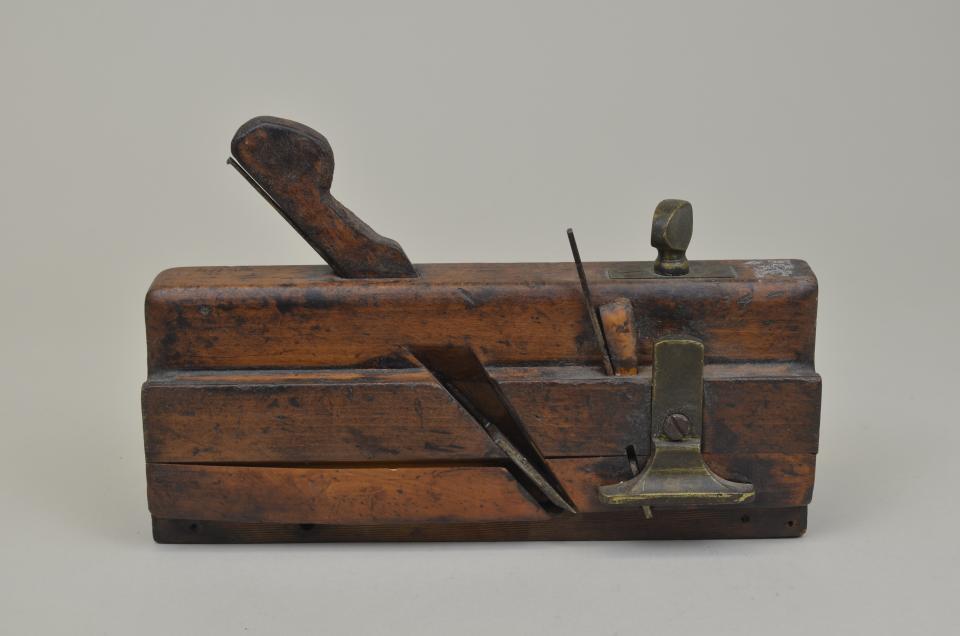
L: 24.0cm W: 5.2cm H: 15.7cm
a- L: 24.0cm W: 5.2cm H: 9.7cm
b- L: 6.2cm W: 1.1cm H: 0.4cm
c- L: 10.8cm W: 1.0cm H: 0.3cm
d- L: 16.3cm W: 2.7cm H: 1.0cm
e- L: 17.3cm W: 3.4cm H: 0.3cm
f- L: 14.2cm W: 2.8cm H: 1.3cm
A wooden rabbet plane with a spur and an adjustable fence.
a- The body is rectangular and made of a brown hardwood. A cheek protrudes from the bottom half of the front and back body. The throat cuts diagonally through the body just left of centre and is exposed through the cheek. Ahead of the main throat, a smaller throat cuts through the cheek only. A brass piece acts as a depth stop for the spur (c). A brass screw sits on top of the body to adjust the depth. The area beneath the cheek has been removed behind the main throat. The sole is flat. A wooden fence is attached to the bottom of the sole, held in place by 2 slotted screws (1 missing). Stamps on the toe read: "HEATHCOTT/SHEFFIELD"; "F.C.LONG"; "E. BROWN"; "F.C.LONG" (x2, overstamped); "I BLOWER". Stamps on the heel read: "I BLOWER"; "F.C.L(ON)G"; "(?)RO(???)"; "W. C. (??)"; "F.C.LONG".
b- A small wedge made of the same hardwood as the body. It tapers to a point on one end and is somewhat flat on the other.
c- A small spur iron. It is a thin strip of dark grey metal. It abruptly widens near the cutting edge. The edge is curved concavely in an ovolo form, with a sharp point on the long side.
d- A large wedge made of the same hardwood as the body. It tapers to a point on one end and is rounded in an oval shape on the other. A shallow cut-out below the head allows for easy handling.
e- The cutting iron is a thins trip of dark grey metal. It abruptly widens near the cutting edge. The cutting edge is flat and slightly angled. The width of the cut is 1 1/4".
f- A strip of wood that sits under the cheek at the front of the body.
Rabbet planes are used to cut straight grooves, or rabbets, into the edge of a working piece. A spur iron sits ahead of the cutting iron and cuts a slit in the wood along the inside edge of the groove so there is less chance of the wood tearing out when the wide cutter runs through it. They are traditionally used for drawer bottoms or rear walls. Other names include dado planes, ploughing planes and matching planes when combined with a tonguing plane.
